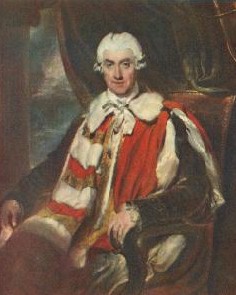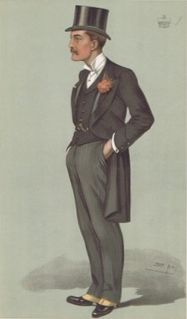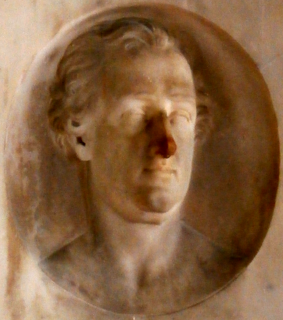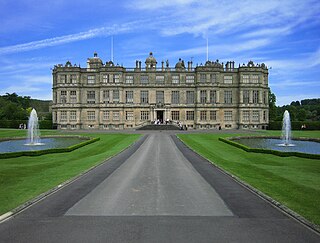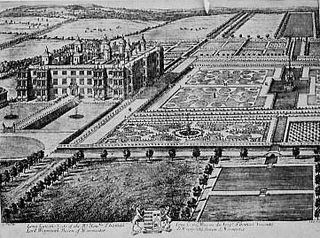Notes
- 1 2 3 4 5 6 7 Lee, Sidney, ed. (1898). . Dictionary of National Biography . 56. London: Smith, Elder & Co.
- ↑ Chaucer's Legende, Boece , The Deth of Blaunche , Pity, A Treatise on the Astrolabe , and Stedfastness.
- ↑ Burke, Sir Bernard, (1938 ed) Burke's Peerage, Baronetage and Knightage. Shaw, London. p. 243
- 1 2 3 Woodfall, H. (1768). The Peerage of England; Containing a Genealogical and Historical Account of All the Peers of that Kingdom Etc. Fourth Edition, Carefully Corrected, and Continued to the Present Time, Volume 6. p. 258.
- 1 2 Lee, Sidney; Edwards, A. S. G. (revised) (2004). "Thynne, William (d. 1546)". Oxford Dictionary of National Biography (online ed.). Oxford University Press. doi:10.1093/ref:odnb/27426.(Subscription or UK public library membership required.)
- ↑ Girouard, Mark, Thynne, Sir John (1515–1580), estate manager and builder of Longleat in Oxford Dictionary of Biography (Oxford University Press, 2004)
- ↑ Booth, Muriel. "Thynne, John (?1550–1604), of Longleat, Wilts". History of Parliament. The History of Parliament Trust. Retrieved 2 January 2016.
- ↑ Lancaster, Henry; Thrush, Andrew. "Thynne, Charles (c.1568–1652), of Cheddar, Som". History of Parliament. The History of Parliament Trust. Retrieved 2 January 2016.
- ↑ Pugh, R. B.; Crittall, Elizabeth, eds. (1957). "Parliamentary history: 1529–1629". A History of the County of Wiltshire: Volume 5. British History Online. London: Victoria County History.
- ↑ Ferris, John P. "Thynne, Sir James (c.1605-70), of Longbridge Deverill, Wilts". History of Parliament. The History of Parliament Trust. Retrieved 2 January 2016.
- ↑ Helms, M. W.; Ferris, John P. "Thynne, Sir Thomas (c.1610–c.69), of Richmond, Surr". History of Parliament. The History of Parliament Trust. Retrieved 2 January 2016.
- ↑ Marshall, Alan (2008) [2004]. "Thynne, Thomas [nicknamed Tom of Ten Thousand] (1647/8–1682)". Oxford Dictionary of National Biography (online ed.). Oxford University Press. doi:10.1093/ref:odnb/27423.(Subscription or UK public library membership required.)
- ↑ Heath-Caldwell, J. J. "Thomas Thynne, 1st Marquess of Bath, 3rd Viscount Weymouth". JJ Heath-Caldwell. Retrieved 2 January 2016.
- ↑ Hayton, D. W. "Thynne, Hon. Henry (1675-1708)". The History of Parliament. The History of Parliament Trust. Retrieved 2 January 2016.
- ↑ Dunaway, Stewart (2013). Lord John Carteret, Earl Granville: His Life History and the Granville Grants. Lulu. p. 33. ISBN 9781300878070.
- ↑ "Bath, Thomas Thynne". Encyclopedia Britannica 1911. Retrieved 2 January 2016.
- ↑ Thorne, Roland. "Carteret [formerly Thynne], Henry Frederick". Oxford Dictionary of National Biography. Retrieved 2 January 2016.
- ↑ "Thomas Thynne, 2nd Marquess of Bath (1765–1837)". National Portrait Gallery. Retrieved 2 January 2016.
- ↑ Escott, Margaret. "Thynne, Lord Henry Frederick (1797-1837), of 6 Grovesnor Square, Mdx". History of Parliament. The History of Parliament Trust. Retrieved 2 January 2016.
- ↑ "John Thynne, 4th Marquess of Bath (1831-1896), Diplomat and landowner". National Portrait Gallery. Retrieved 2 January 2016.
Attribution
![]() This article incorporates text from a publication now in the public domain : Lee, Sidney, ed. (1898). "Thynne, William". Dictionary of National Biography . 56. London: Smith, Elder & Co.
This article incorporates text from a publication now in the public domain : Lee, Sidney, ed. (1898). "Thynne, William". Dictionary of National Biography . 56. London: Smith, Elder & Co.
